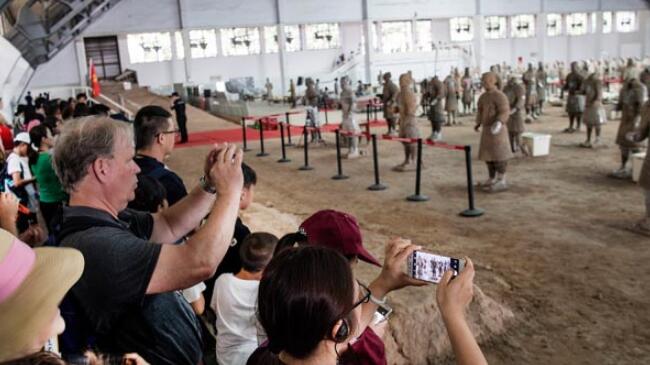More Terracotta Warriors emerge from the trenches
Archaeologists have unearthed another army of Terracotta Warriors in their campaign to shed light on history. About 200 more Terracotta Warriors and a large number of weapons from the No 1 Pit of the Mausoleum of Emperor Qinshihuang were revealed in the latest round of excavation.

Visitors take photos at the Emperor Qinshihuang's Mausoleum Site Museum in Xi'an in July 2018. [Photo/Xinhua]
The Emperor Qinshihuang's Mausoleum Site Museum said on Monday that during the third dig, launched between 2009 and 2019, an area of 400 square meters in the No 1 Pit has been excavated.
No 1 Pit is the largest among three pits that surround the tomb of the nation's first emperor in northwest China's Shaanxi province.
Discoveries also included 12 clay horses, traces of two chariots and some building sites. Weapons contained in storage boxes included colored shields, bronze swords and bows.
Shen Maosheng, who leads the excavation, said that based on the different gestures, most of the newly discovered terracotta figures can be divided into two categories. One is warriors holding weapons, bending their right arms with half clenched fists; the other is warriors carrying bows, with their right arms hanging naturally.
Versions of these figures were arranged in different positions in the pit, indicating their individual tasks in the army, while their armor and costume signify the warriors' ranks, Shen said.
The excavation expanded the study of the military system and equipment of the Qin Dynasty (221-206 BC), and also provided new insight into the artistic style, characteristics and manufacturing techniques of figurines of the period, Shen added.
With a length of 230 meters, a width of 62 meters and a depth of 5 meters, archaeologists have estimated that there are more than 6,000 clay figures and horses in the 14,260-square-meter pit.

